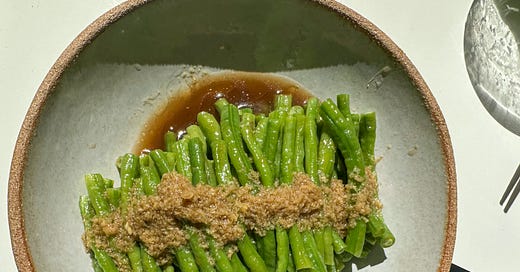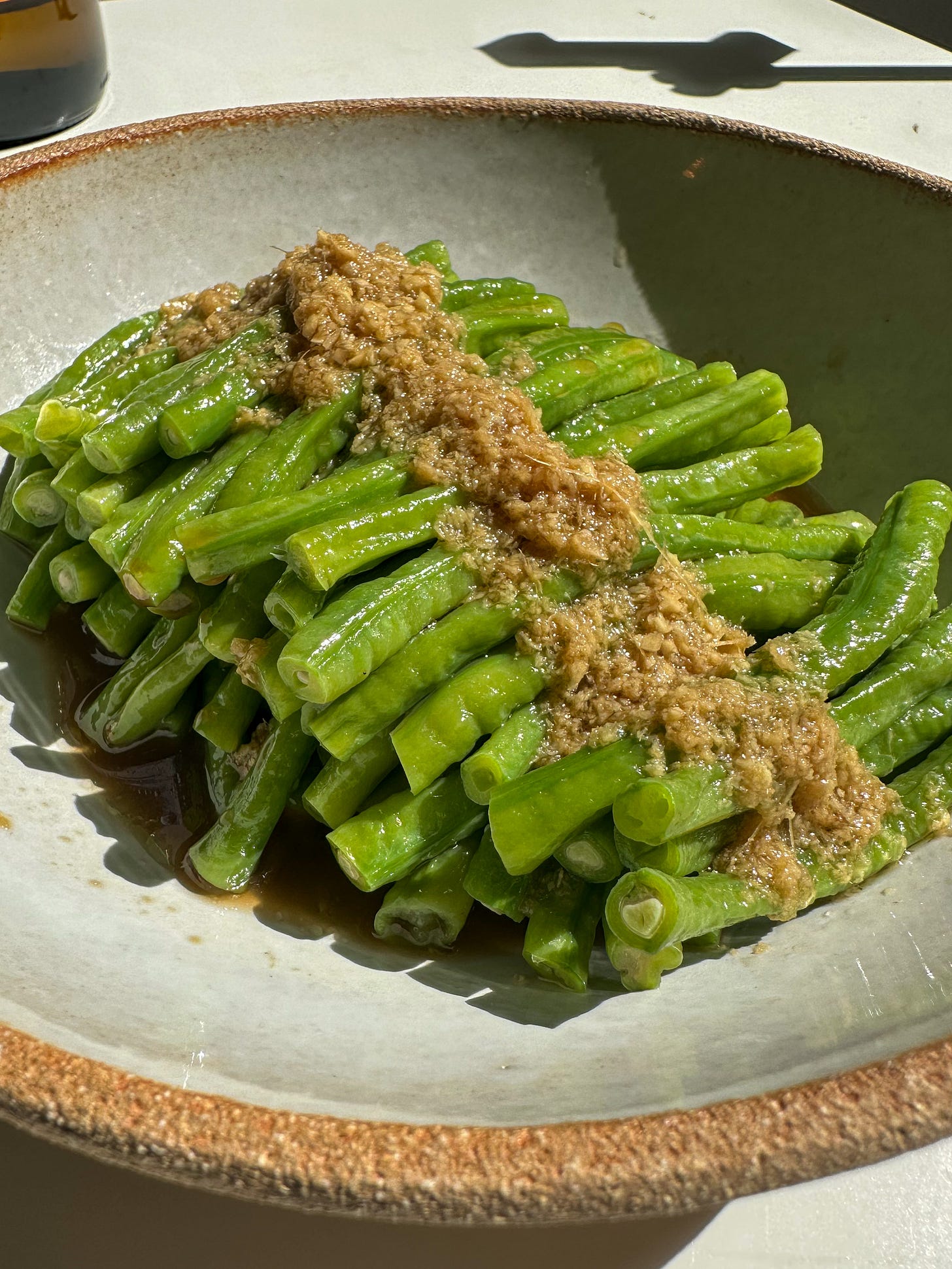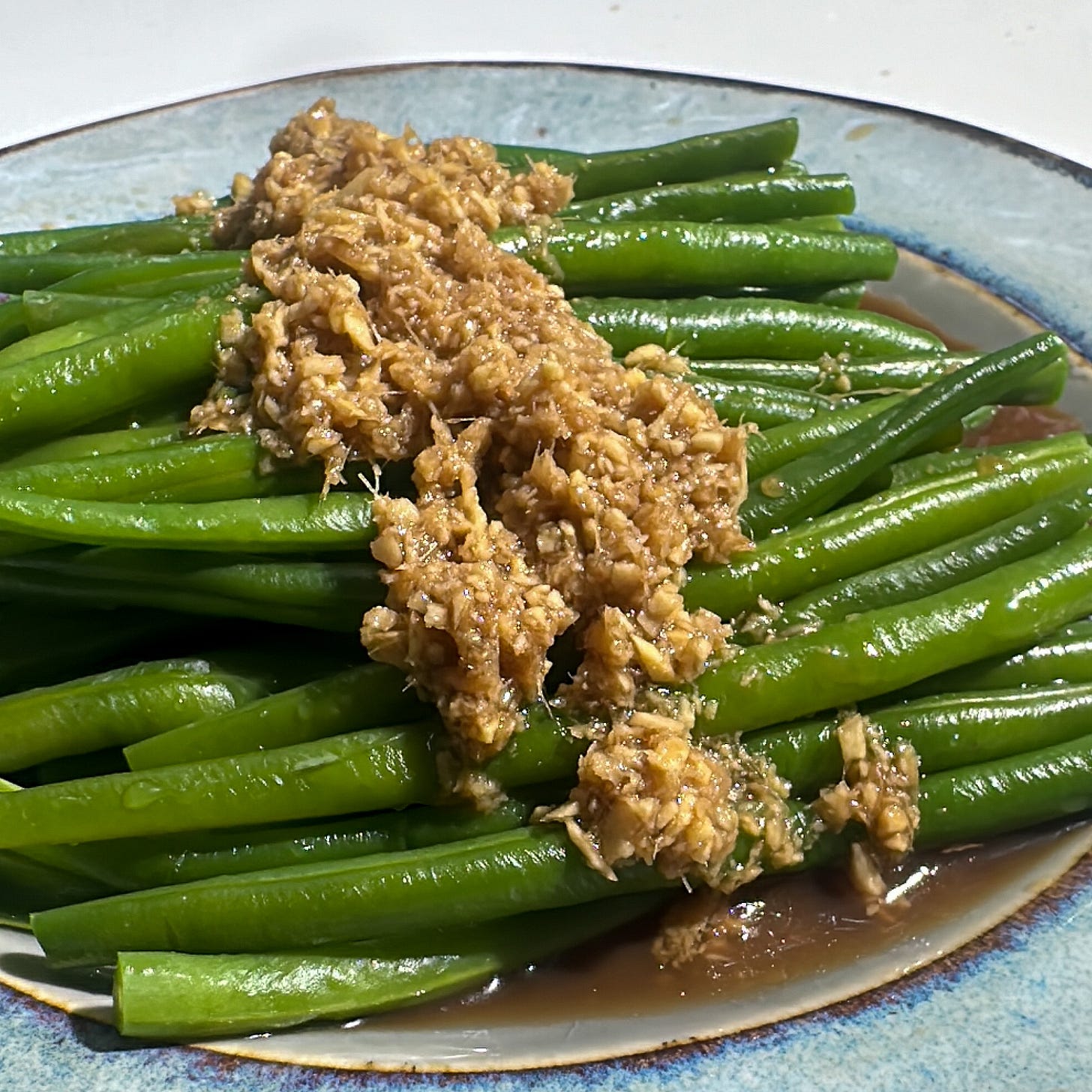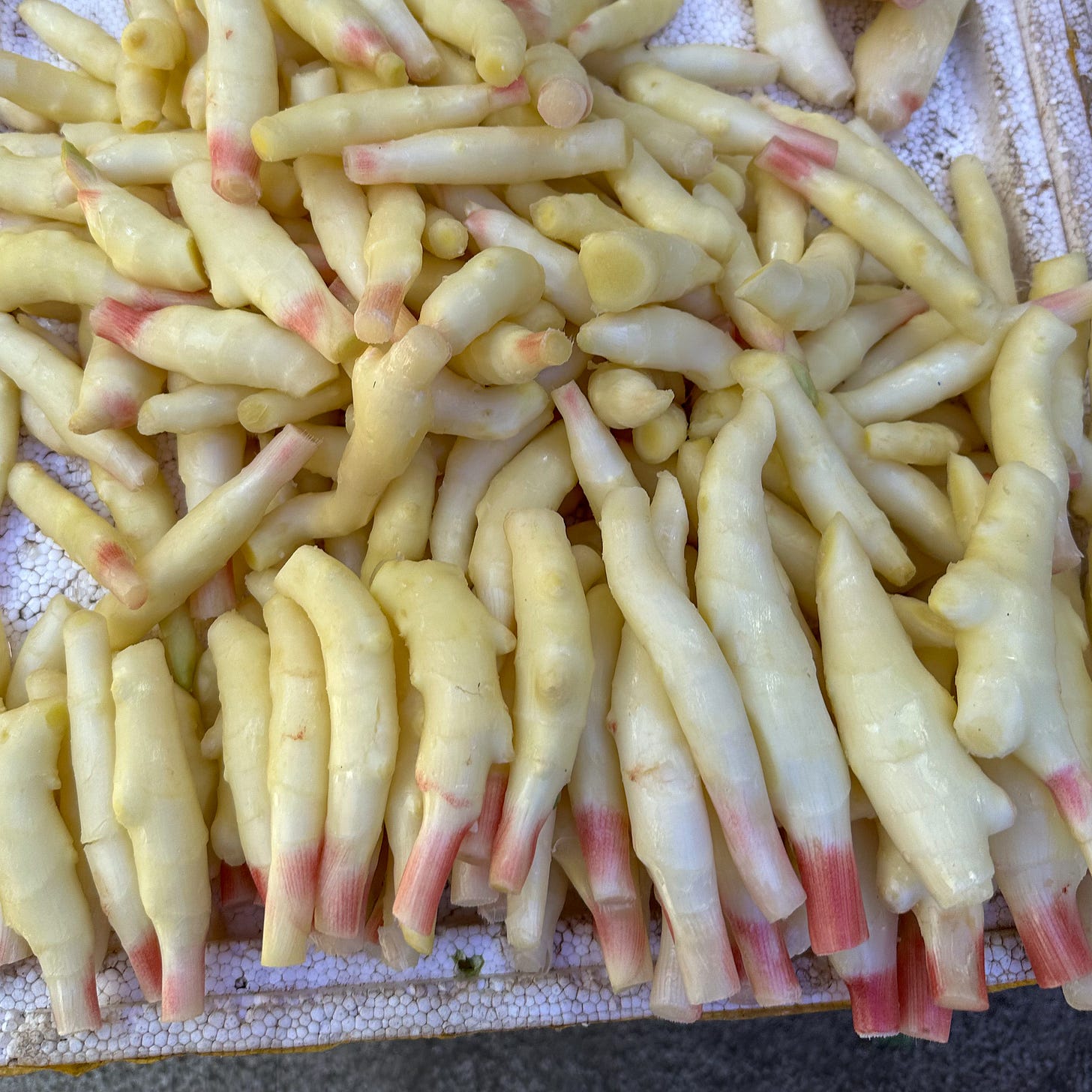Welcome to Chill Crisp, my internet corner of thoughts about food and recipes with context. Mostly Chinese food I’ve been eating my whole life and new flavors inspired by travel, research and a splash of creativity.
This is part 4 of cooking Sichuan classics from one of the earliest Sichuan cookbooks. In previous episodes, I made Mapo Tofu, Kung Pao Chicken, and Tomato Egg Stir-fry. As usual, scroll down for the recipe and watch the video here!
I eat spicy food all the time, however, I sometimes need a reminder of my love for ginger. And this plate of gingery beans serves as that reminder. Just like how Sichuan food writer Shi Guanghua described, ginger is like a friend you don’t talk to often yet is always there. It provides a refreshing spiciness alternative to chili peppers: “The spiciness of ginger hits the heart while garlic hits mouth and chili hits the stomach”.
*Heartwarmingly spicy* is a good description of ginger, an aromatic root vegetable that has been flavoring dishes for more than two thousand years in China. It was a primary source of spiciness before chili peppers arrived in China during the 16th century. Fresh ginger is used widely with meat and fish dishes to remove the unpleasant fishy or meaty odor, as well as in braised dishes. The ginger protease (Zingibain) also makes meat tender and can react with milk to make this magical dessert called ginger milk curd (姜撞奶)
Long beans in gingery sauce (jiang zhi jiang dou, 姜汁豇豆) represents the ginger juice flavor (jiang zhi Wei, 姜汁味), one of the 23 complex flavors in Sichuan cuisine. Here, ginger ascents to the main star, like a popular supporting role has its spin-off. It also shows how multifaceted Sichuan cuisine can be beyond mere spicy and numbing flavors.
This one is made with long beans (also called snake beans or yardlong beans), these crisp yet tender beans always reminded me of summer in Sichuan. I was happy to find them in Berlin quite frequently, even in the small Asian grocery shop around the corner. If you can't find them, use thin green beans, they taste crunchier. This makes a perfect side dish for any meat mains, noodles or dumplings.
Ginger is used as a food healing therapy in Traditional Chinese Medicine (read this piece about hyper-seasonal eating). Although I’m not a strict practicer of TCM, my grandma used to say “Eating ginger in summer and daikon radish in winter, keeps the doctor away” (冬吃萝卜夏吃姜,不找医生开药方). Surprisingly, ginger and summer make an effective combination, as ginger stimulates the appetite and aids digestion on hot days.
Young ginger, with its light yellow skin and pink tips, comes to the market approaching the end of summer. My family would use these knobs to make a quick stir-fry (similar to this gingery beef), or throw them together with fresh long beans in the pickle jar. For weeks, we would have congee served with pungent pickled ginger and crunchy beans for dinner.
How to make the ginger sauce
- Finely mince the ginger, as fine as possible. I used a microplane, worked pretty well until the last 1 cm. You could also use a ginger grater, or mortar or add blend it with some water in the food processor.
- Soak the ginger in vinegar and salt for 10 min, to bring out the the ginger flavor in the sauce base. And flavor with sesame oil when you serve the dish.
- Use Chinkiang vinegar instead of more aged vinegar like Shanxi style vinegar for the fragrant and milder tang from dark rice vinegar.
- You can also use this gingery sauce to dress spinach, shredded chicken, and even abalone.
The recipe
Here is the original recipe from “大众川菜” (Sichuan recipes for home cooks, first published in 1979). Unlike previous recipes, this one I only did minor changes.
my adapted version:
Ingredients
250 g long beans (or green beans)
2 tbsp ginger (20g)
1.5 tbsp dark rice vinegar (Chinkiang vinegar)
salt to taste
2 tsp sesame oil
3 tbsp stock (vegetable or chicken) or water
MSG (optionally)
vegetable oil
1. Finely mince or grind peeled ginger, add to a bowl with vinegar. Let sit.
2. Cut long beans to about 5-8 cm. In a pot of simmering water, blanch beans with oil and salt for about 1-2 min (green beans about 2-3min), add to an ice bath. Then train.
3. Add stock, salt, MSG, and sesame oil to the ginger-vinegar mixture, and mix to combine. Arrange the beans on a plate a drizzle the sauce. Optionally serve with chili oil.









To more easily grate the ginger, freeze it first, then a microplane can make quick work of it without the fibers getting in the way...